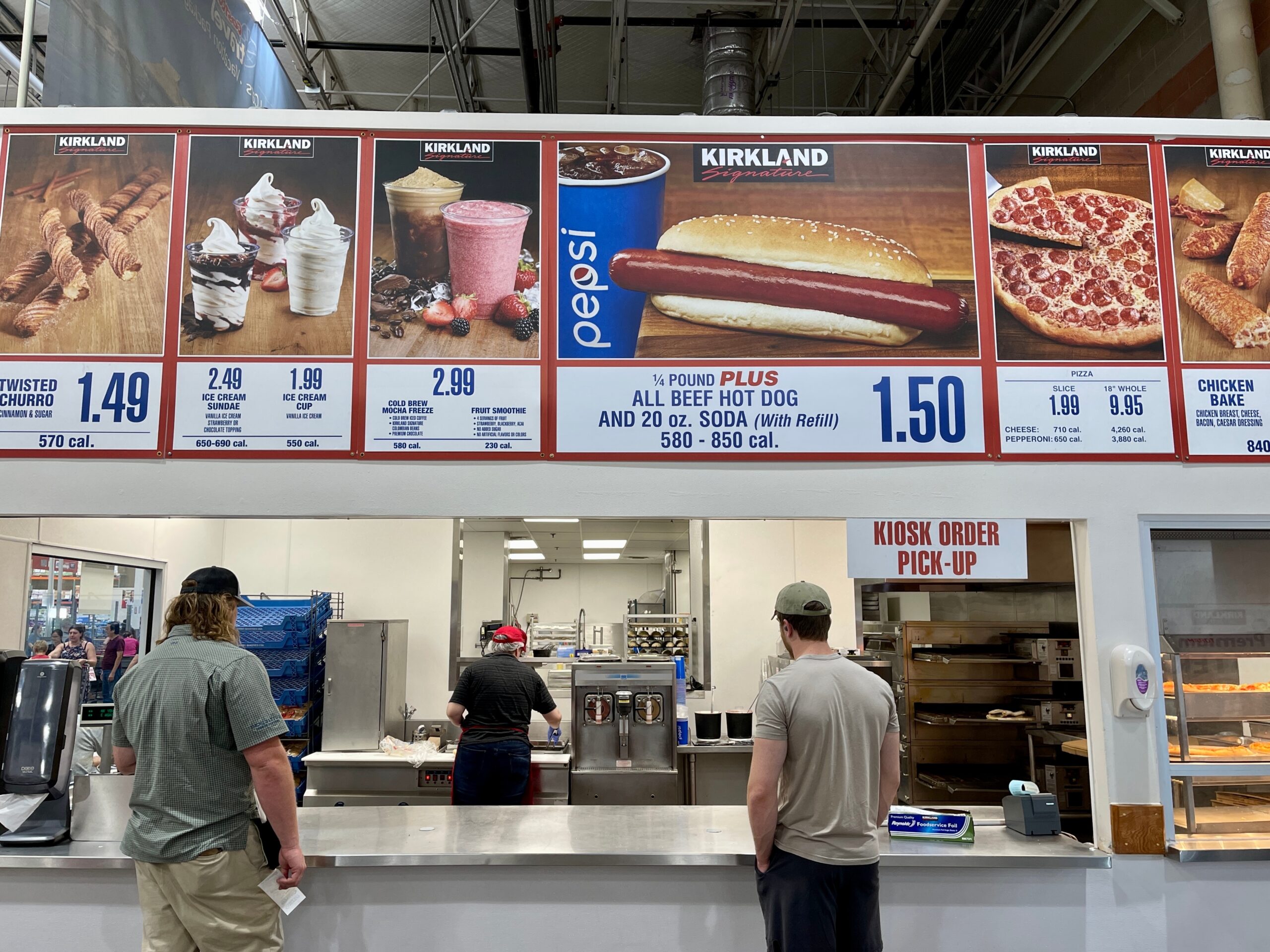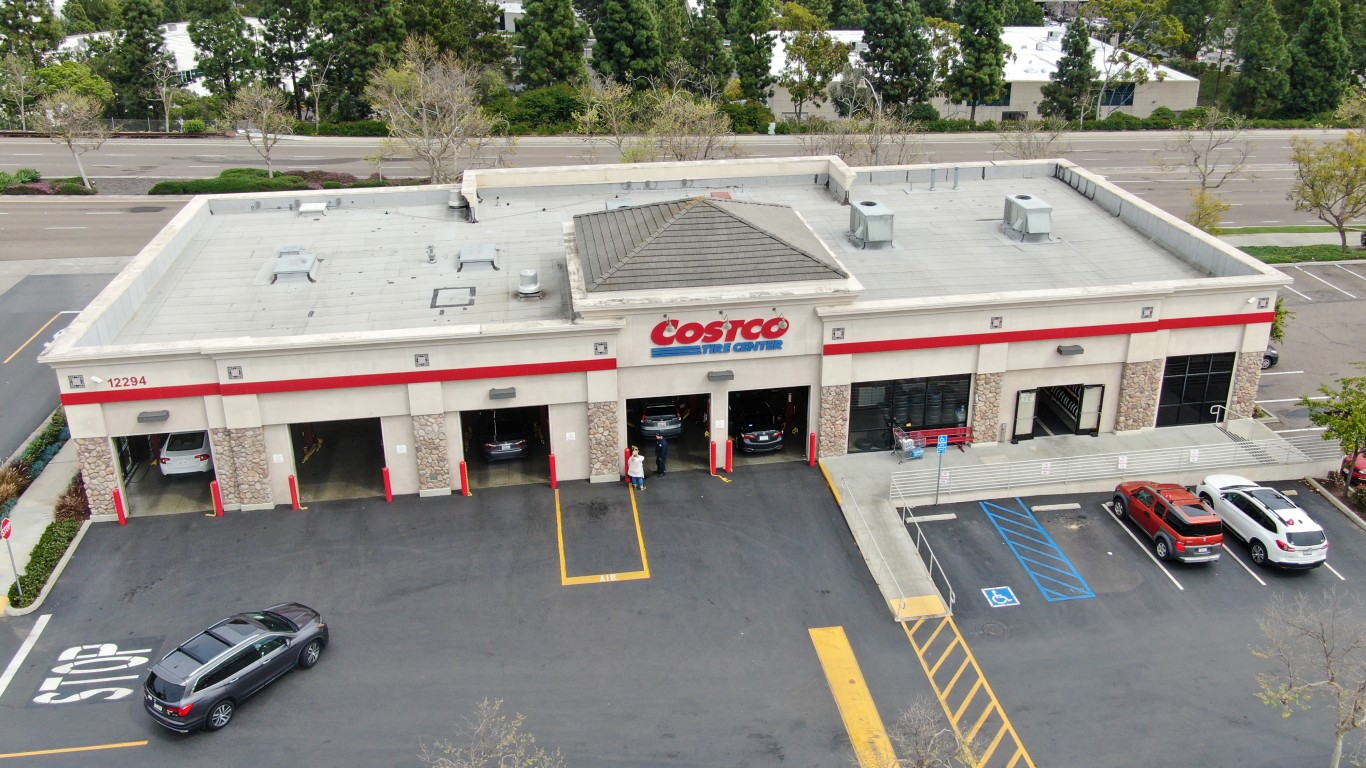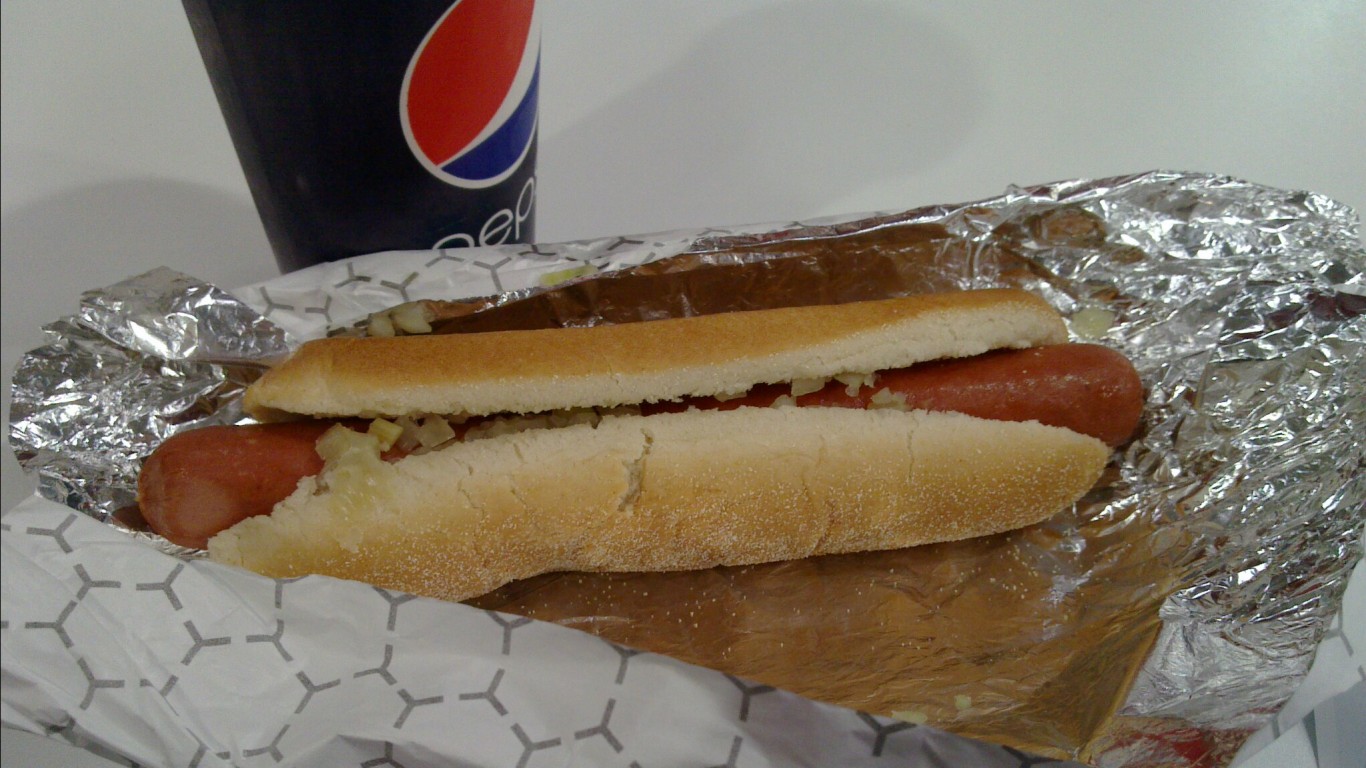
Costco is famous for its $1.50 hot dogs, but why does it keep them at such an incredibly cheap level. After all, its not just a 1/4 pound all beef hot dog, it also comes with a soda that would otherwise cost $.69. Put it togeether, and Costco is selling their hot dogs for $.81 while fast food joints across the country have long since dropped dollar menus.
Let’s dive into 3 secrets Costco uses to keep its hot dog deal at $1.50.
1. Costco Built Not One but TWO Hot Dog Factories
Costco originally began selling its hot dogs in 1984 for $1.50. The hot dogs were provided by Hebrew National. However, as pricing pressures mounted the company decided to take hot dog production in-house. That’s to say, they bought a meat processing facility near Los Angeles in 2008..
However, what’s not as well known is that a decade after opening their Los Angeles facility in 2008, Costco opened a second meat processing facility on the edges of the Chicago suburbs. As then Costco CEO Craig Jelinek told Seattle Business Magazine 425Business in 2018:
“What we figured out we could do is build our own hot dog-manufacturing plant (in Los Angeles) and make our own Kirkland Signature hot dogs. Now we are doing so much hot dog business that we’ve opened up another plant in Chicago.”
Costco doesn’t pay for advertising, but it does know that some of its items like its $1.50 hot dog, $4.99 rotisserie chicken, and $5.99 pumpkin pies are iconic products known for their price. So it’s willing to take extreme measures to keep prices down on each of these items.
The company built a $450 million poultry factory in Nebraska to keep the price of its rotisserie chickens at $4.99, and that’s just a single item in their massive warehouses!
2. Costco Moves Incredible Volume of Hot Dogs
You’ll find a number a number of estimates on Costco’s hot dog sales. In 2018 425 Business reported Costco sold the following mounts of its iconic products:
- 135 million hot dogs annually
- 87 million rotisserie chickens
- Up to 3 million pumpkin pies just in the shortened week before Thanksgiving – with estimates of 6 million in the Fall season
Today, estimates rise as high as 151 million. Costco knows how important volume and simplified menus are. For example, while you used to be able to get their hot dogs in either regular or as Polish versions, they cut the Polish hot dog in 2018 to simplify their menu. Costco has made the decision to simplify other items to keep prices low as well. In 2020 they eliminated their $1.99 combo pizza which had vegetables on it. Today, pizza slices still cost $1.99 but are limited to cheese and pepperoni.
3. Costco’s Founder Will Kill Anyone Who Raises the Hot Dog Price

Costco’s outgoing CEO Craig Jelink once revealed part of their drive for keeping hot dogs at $1.50:
“I came to (Costco Founder Jim Sinegal) once and I said, ‘Jim, we can’t sell this hot dog for a buck fifty. We are losing our rear ends.’ And he said, ‘If you raise the effing hot dog, I will kill you. Figure it out.’ That’s all I really needed. By the way, if you raised (the price) to $1.75, it would not be that big of a deal. People would still buy (it). But it’s the mindset that when you think of Costco, you think of the $1.50 hot dog (and soda).”
As I noted earlier, Costco has selectively employed this strategy of holding prices no matter what on some products, but not all. For example, the price of Chicken Bakes have risen from $2.99 to $3.99 in recent years. Another subtle change is that the cost of a soda went from $.59 to $.69.
Perhaps most surprising was Costco introducing a roast beef sandwich that sells for $9.99 and is a far cry from other incredible deals on their Food Court menu.
The key point here is that the value of Costco’s $1.50 hot dog (and $4.99 rotisserie chicken) in areas like marketing and consumer perception are high enough Costco is willing to draw a line in the sand on their price. However, less iconic products still can see (small) prices hikes as food inflation continues rising.
Take Charge of Your Retirement In Just A Few Minutes (Sponsor)
Retirement planning doesn’t have to feel overwhelming. The key is finding expert guidance—and SmartAsset’s simple quiz makes it easier than ever for you to connect with a vetted financial advisor.
Here’s how it works:
- Answer a Few Simple Questions. Tell us a bit about your goals and preferences—it only takes a few minutes!
- Get Matched with Vetted Advisors Our smart tool matches you with up to three pre-screened, vetted advisors who serve your area and are held to a fiduciary standard to act in your best interests. Click here to begin
- Choose Your Fit Review their profiles, schedule an introductory call (or meet in person), and select the advisor who feel is right for you.
Why wait? Start building the retirement you’ve always dreamed of. Click here to get started today!
Thank you for reading! Have some feedback for us?
Contact the 24/7 Wall St. editorial team.


